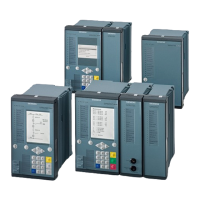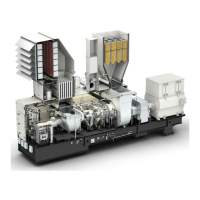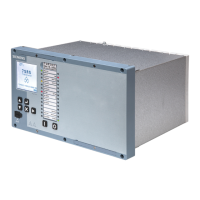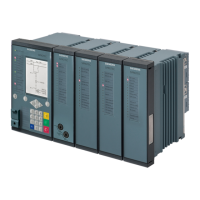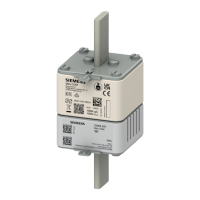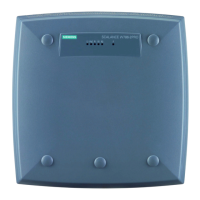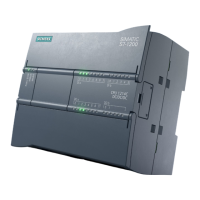Do you have a question about the Siemens 7VE51 and is the answer not in the manual?
Details the device's suitability for paralleling generators and synchronous voltage sources.
Outlines the key capabilities and components of the paralleling device.
Details the different housing types and their arrangements.
Covers basic electrical specifications, inputs, outputs, and environmental conditions.
Details electrical characteristics of input and output circuits.
Defines operating ranges and step sizes for paralleling parameters.
Specifies acceptable deviations for voltage, frequency, and angle.
Sets ranges for frequency and voltage balancing parameters.
Explains the overall operation and hardware structure of the device.
Explains how annunciations are processed and displayed.
Details how to perform and interpret routine operational measurements.
Covers hardware and software monitoring capabilities.
Provides guidance on safely unpacking the device.
Covers essential steps before installation.
Highlights critical safety measures for operating the device.
Explains how to interact with the device via its interface and PC.
Introduces the process of setting operational parameters.
Introduces the annunciations and their purpose.
Outlines the general requirements for commissioning the device.
Details procedures for checking the control circuits before operation.
Details the process for paralleling synchronous systems.
Specifies routine checks for maintaining device performance.
Provides methods for identifying and diagnosing faults within the device.
Presents overall schematic diagrams of the device's electrical connections.
Shows detailed connection examples for different device configurations.
Lists reference tables for binary inputs, outputs, and functional parameters.
Details the device's suitability for paralleling generators and synchronous voltage sources.
Outlines the key capabilities and components of the paralleling device.
Details the different housing types and their arrangements.
Covers basic electrical specifications, inputs, outputs, and environmental conditions.
Details electrical characteristics of input and output circuits.
Defines operating ranges and step sizes for paralleling parameters.
Specifies acceptable deviations for voltage, frequency, and angle.
Sets ranges for frequency and voltage balancing parameters.
Explains the overall operation and hardware structure of the device.
Explains how annunciations are processed and displayed.
Details how to perform and interpret routine operational measurements.
Covers hardware and software monitoring capabilities.
Provides guidance on safely unpacking the device.
Covers essential steps before installation.
Highlights critical safety measures for operating the device.
Explains how to interact with the device via its interface and PC.
Introduces the process of setting operational parameters.
Introduces the annunciations and their purpose.
Outlines the general requirements for commissioning the device.
Details procedures for checking the control circuits before operation.
Details the process for paralleling synchronous systems.
Specifies routine checks for maintaining device performance.
Provides methods for identifying and diagnosing faults within the device.
Presents overall schematic diagrams of the device's electrical connections.
Shows detailed connection examples for different device configurations.
Lists reference tables for binary inputs, outputs, and functional parameters.
| Communication protocols | Modbus |
|---|---|
| Protection functions | Overcurrent |
| Breaking Capacity | N/A (Protection Relay) |
| Poles | N/A (Protection Relay) |
| Trip Unit | N/A (Protection Relay) |
